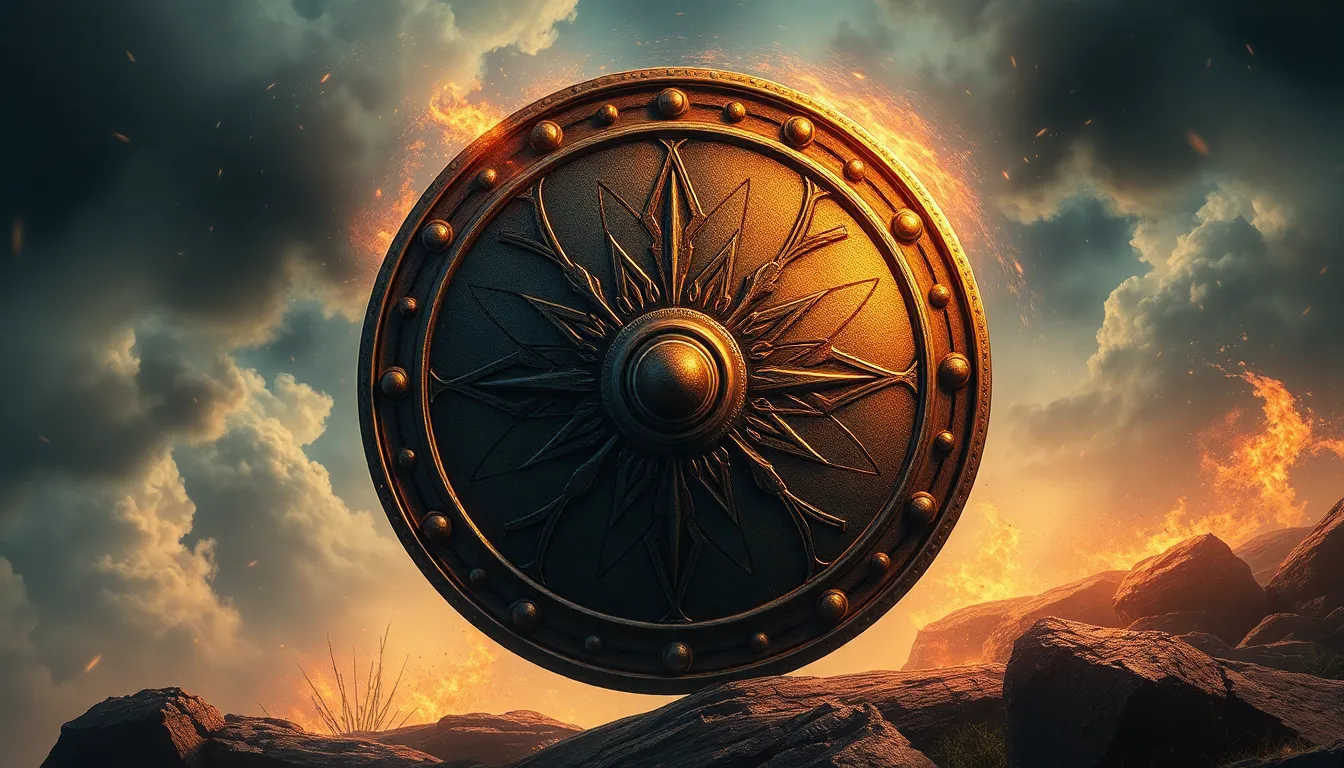The Shield of Aeneas: Divine Protection in Myth
I. Introduction
The Shield of Aeneas, crafted by the god Vulcan, is a significant symbol in Virgil’s epic poem, the “Aeneid.” This remarkable artifact not only serves as a physical defense for Aeneas in battle but also embodies the deep-seated themes of fate, divine intervention, and cultural identity that permeate ancient mythology. The significance of divine protection is a recurrent motif in mythological narratives, where gods frequently intervene in human affairs, shaping destinies and influencing the course of events. This article explores how the shield symbolizes the multifaceted nature of divine protection, reflecting broader themes of fate and cultural identity in ancient Rome.
II. Historical Context of the Aeneid
Virgil, born in 70 BCE, lived during a transformative period in Roman history characterized by political turmoil and the rise of the Roman Empire. The “Aeneid” was written during the reign of Emperor Augustus, who sought to legitimize his rule and unify the Roman populace through a shared sense of identity rooted in mythology and history.
The purpose of the “Aeneid” extends beyond mere storytelling; it serves as a national epic that connects the origins of Rome to the heroic legacy of Aeneas, a Trojan prince. Through Aeneas’s journey, Virgil articulates the values of duty, piety, and sacrifice that underpin Roman identity, as well as the divine support that propels the Trojan hero towards his fate.
III. The Construction and Description of the Shield
The Shield of Aeneas is a masterpiece of divine craftsmanship, created by Vulcan, the Roman god of fire and metalworking. In Book 8 of the “Aeneid,” Aeneas visits Vulcan’s forge, where he witnesses the god and his assistants creating not only the shield but also various weapons for the Trojans.
The materials used in the construction of the shield are rich in symbolism. The shield is made from bronze, silver, and gold, signifying strength, value, and the divine nature of its creation. Each scene depicted on the shield represents critical moments in Roman history and mythology, thus providing a visual narrative that encompasses both Aeneas’s personal journey and the larger historical context of Rome.
- Scenes of warfare and peace
- Images of the founding of Rome
- Depictions of future Roman heroes and their triumphs
This detailed representation serves not only to inspire Aeneas but also to remind the audience of their own cultural heritage.
IV. Thematic Analysis: Divine Protection
The concept of divine protection is central to many mythological stories, serving as a safeguard for heroes on their journeys. In the “Aeneid,” Aeneas’s shield embodies this divine protection, allowing him to confront his enemies with confidence. Comparatively, other mythological shields, such as Achilles’s shield in Homer’s “Iliad,” share this theme, yet they also highlight the differences in how protection is perceived and utilized.
While Achilles’s shield represents individual prowess and glory, Aeneas’s shield is intertwined with themes of duty and the collective destiny of the Roman people. The implications of divine help versus human agency are explored through Aeneas’s reliance on the gods, suggesting that while divine intervention is crucial, human actions and decisions remain vital in shaping outcomes.
V. The Shield as a Narrative Device
The Shield of Aeneas plays a crucial role in advancing the plot of the “Aeneid.” It serves as a narrative device that not only foreshadows Aeneas’s future challenges and triumphs but also deepens the emotional and psychological complexity of his character. As he gazes upon the scenes depicted on the shield, Aeneas is reminded of his destiny and the weight of his responsibilities.
This moment of reflection highlights the duality of his existence as both a warrior and a leader. The shield symbolizes the burdens he must carry, emphasizing the connection between personal sacrifice and the greater good.
VI. The Shield’s Representation of Roman Values
The imagery on the Shield of Aeneas encapsulates key Roman values such as duty, honor, and sacrifice. Each depicted scene serves as a reminder of the ideals that Romans held dear, reinforcing the notion of a collective identity forged through shared struggles and achievements.
The shield not only reflects the historical triumphs of Rome but also acts as a metaphor for the challenges faced by the Roman Empire. The imagery resonates with contemporary audiences, serving as a reminder of the values that underpin society and the sacrifices made for the greater good.
VII. Interpretations of the Shield in Later Literature and Art
The influence of the Shield of Aeneas extends far beyond the “Aeneid,” impacting subsequent literary works and artistic representations. In the Renaissance and Baroque periods, artists drew inspiration from Virgil’s epic, creating visual adaptations that highlight the shield’s significance.
Modern interpretations continue to explore the themes represented by the shield, emphasizing its relevance in contemporary discussions about identity, protection, and the human experience. The shield remains a powerful symbol of the intersection between myth and reality, resonating with audiences across time.
VIII. The Role of Fate and Prophecy
Fate is an overarching theme in the “Aeneid,” intricately woven into the narrative structure. The relationship between divine protection and predestined outcomes is pivotal to understanding Aeneas’s character. While he receives aid from gods like Venus and Vulcan, his journey is ultimately governed by fate, which he must navigate with acceptance and resolve.
Aeneas’s acceptance of fate signifies a form of divine protection, where surrendering to the will of the gods provides him with strength and purpose. This interplay between fate and divine intervention underscores the complexity of human existence and the search for meaning in the face of challenges.
IX. Comparative Analysis: Aeneas vs. Other Heroes
When comparing Aeneas’s divine protection to that of other mythological heroes, we find both similarities and differences. Heroes like Hercules and Achilles also benefit from divine favor, yet their journeys are often marked by individualistic pursuits of glory and vengeance.
Aeneas, in contrast, embodies the values of duty and piety, emphasizing the importance of collective destiny over personal ambition. His shield, a symbol of divine protection, serves not just as a defense against enemies but as a reminder of his obligations to his people and the future of Rome.




